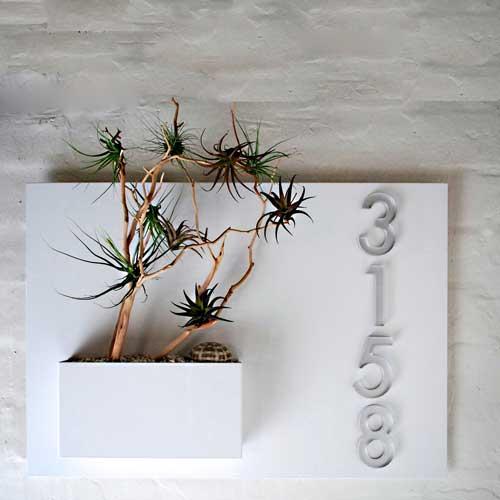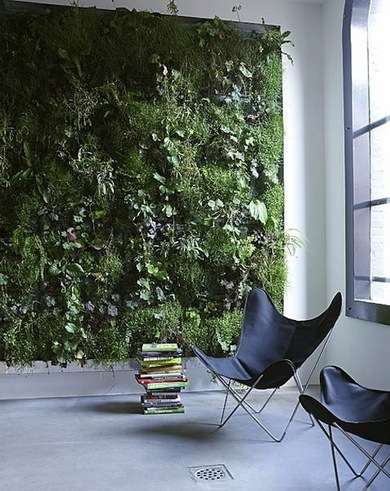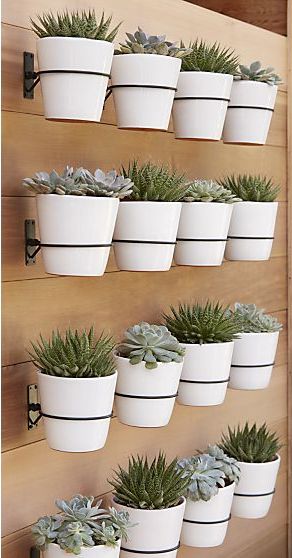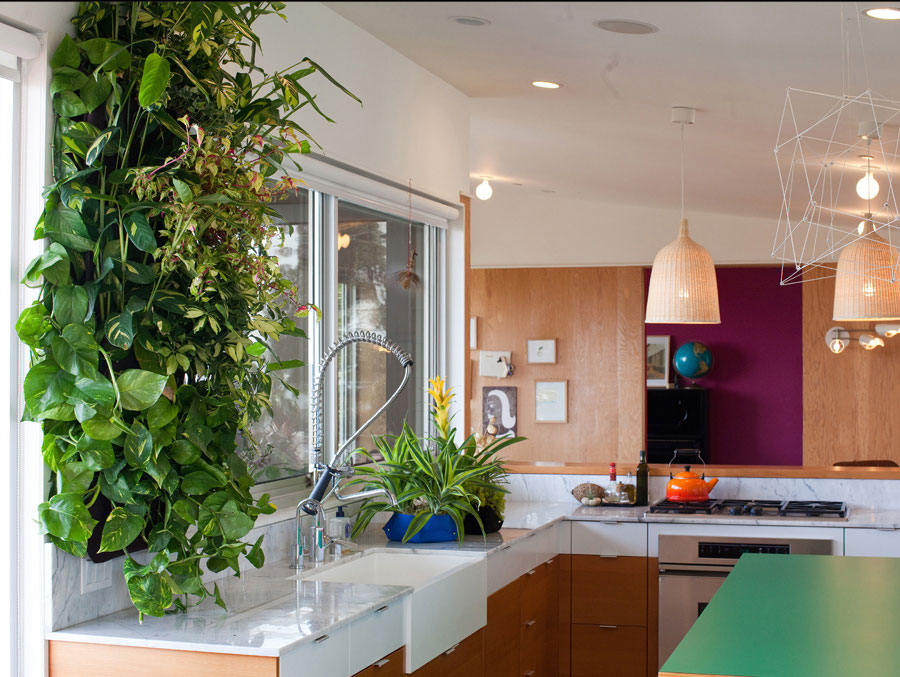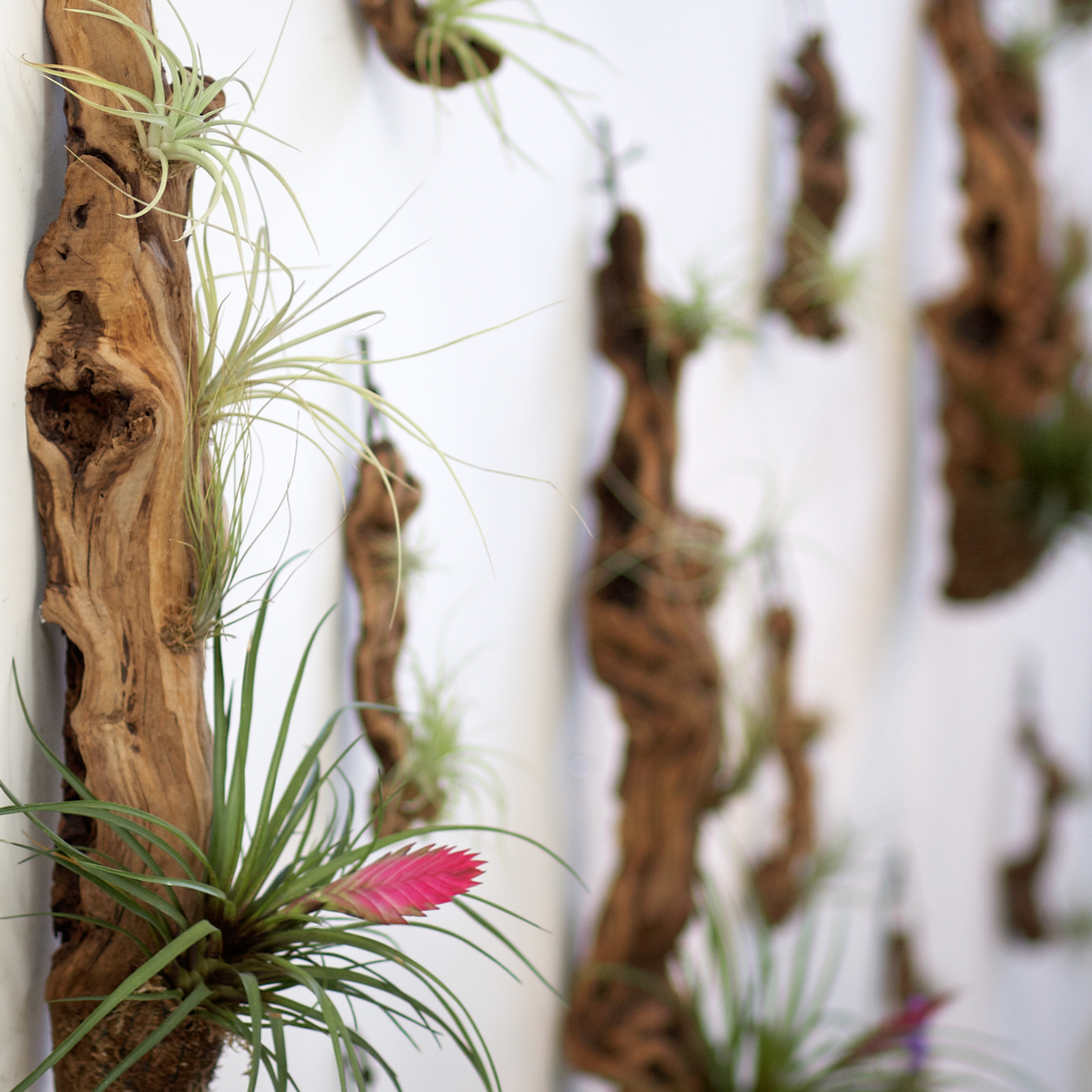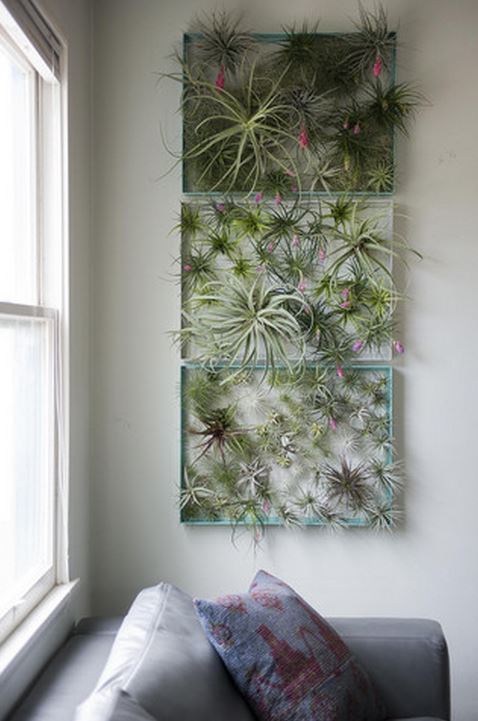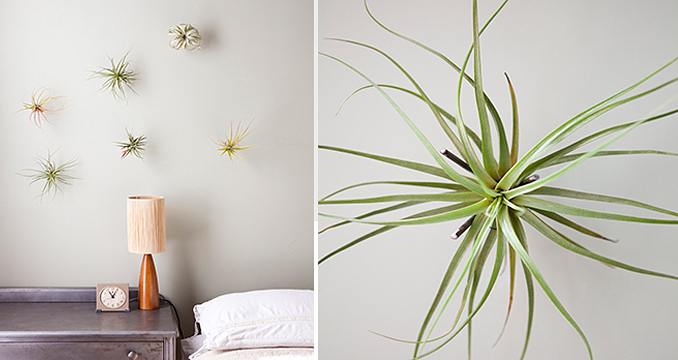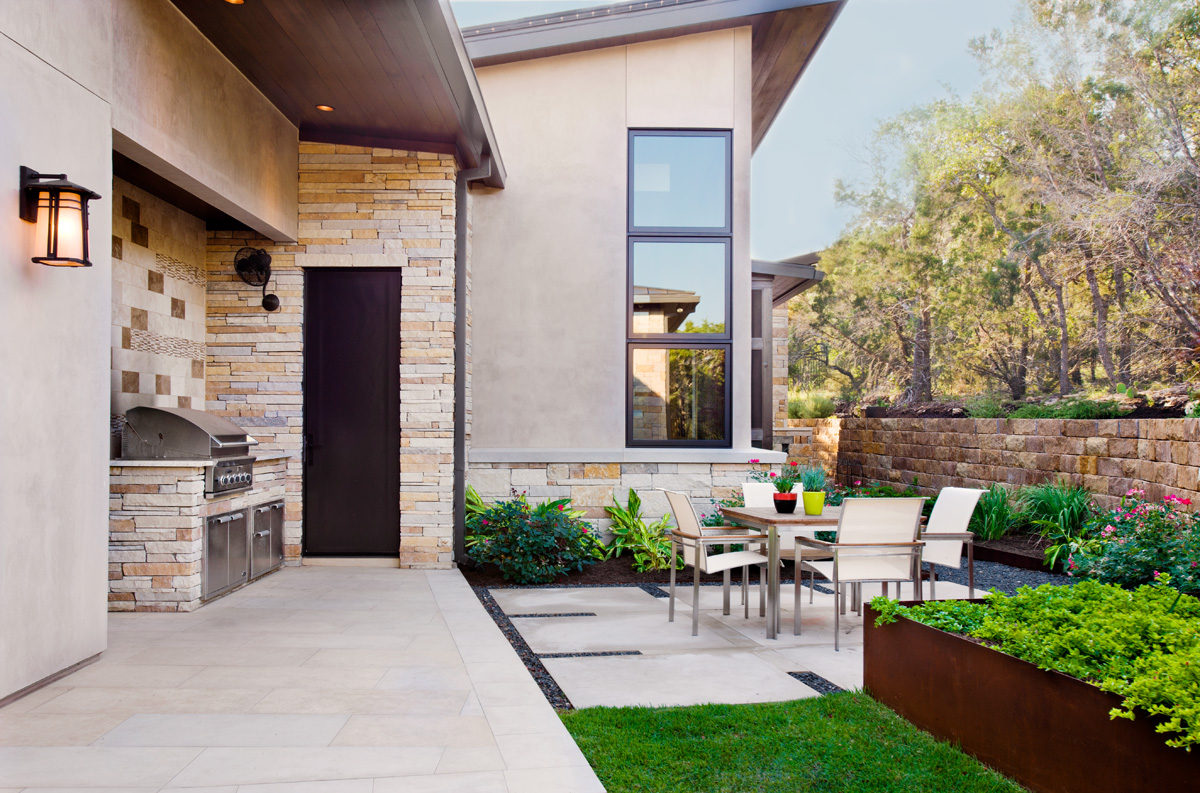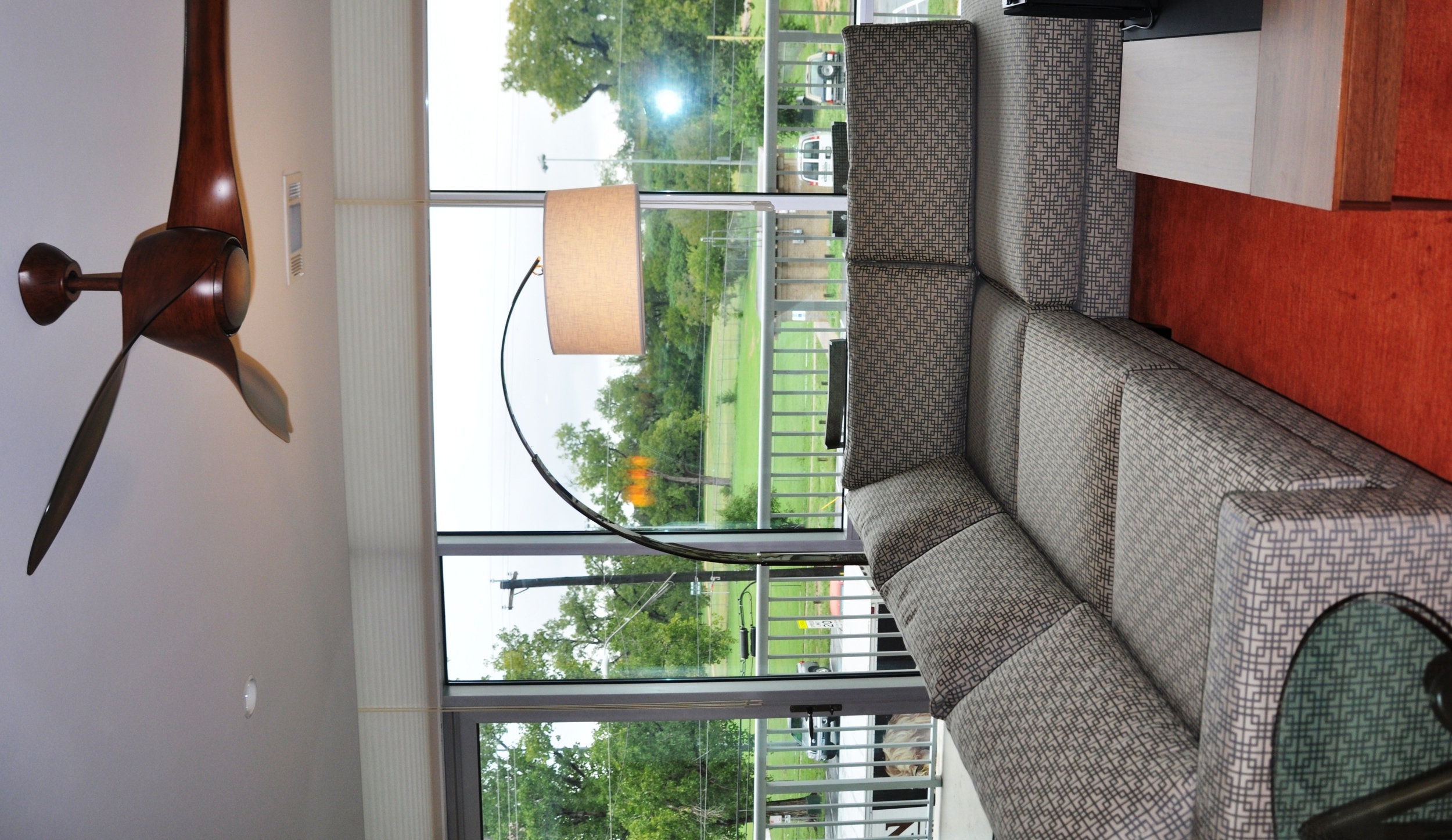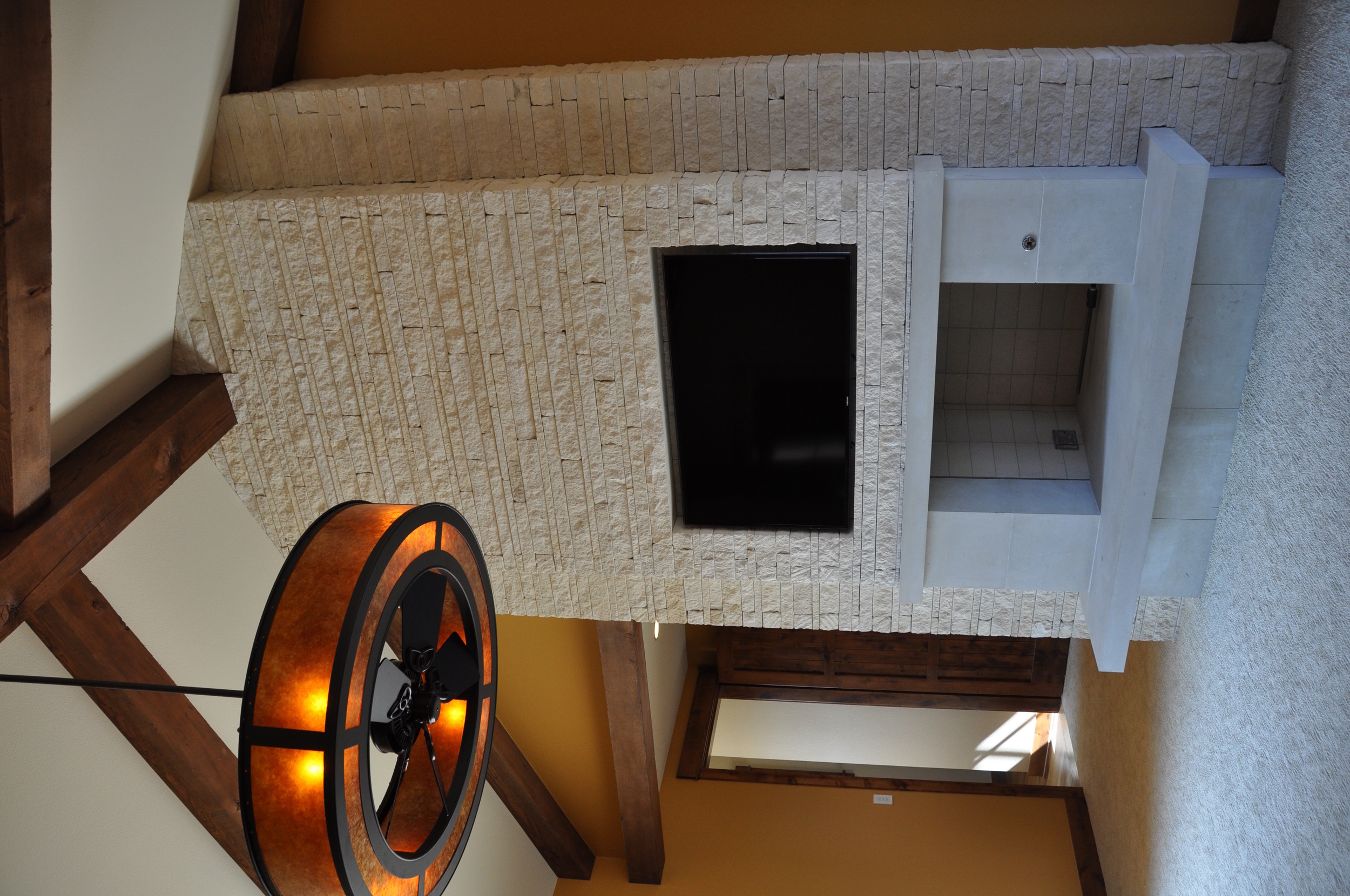Now that it's summer it is time to move your gardens and plants back outside...but have you thought about moving your gardens ON the walls? Yes, we're seeing everyone pick their tomatoes & peaches and create delicious meals from their new sprouts, but we're also seeing a new craze...vertical garden walls [or living/green walls as some people call them]. People are literally buying hundreds of succulents, cacti, and grass roots and planting them on their wall. Sounds crazy, but we love it!
This live wall concept has been around for a while but has recently become extremely popular.
With the warmer weather coming, we have been planning this post (since it's best to plant during Spring & Summer), but recently Paula visited the Dwell on Design Exhibit in Los Angeles and saw various, luscious live walls to inspire the blog even more!
First of all there are 3 main things to consider when installing a live wall. We will walk through each one of them to help you create the best one for your home!
1. Space
How much room do you want to allot for your living wall?
There are wall planters that are as small as one little vase--which look great next to your front door, or inside by your office desk.
And then there are HUGE planters that can take up an entire wall on your back patio, or interior living room.
Of course the most options lie between the small planters and the huge walls...From pots you can attach to your wall, to wooden frames full of succulents, the options really are endless.
2. Cost
Obviously, the bigger the plant wall, the more money it's going to cost. If you are going to go really big, we suggest hiring a professional. This will allow you to customize the perfect design for your space without wasting any time or resources.
Many of the larger wall systems are plumbed with a water drip system (which is hard to self-install) to keep the plants well fed and consistently happy across the board.
If your project is smaller and does not need professional help, but you don't want to start from scratch, there are affordable starter kits or pre-made gardens [for example, the image below is multiple modular pieces from Succulent Gardens Company]
Another easy-to-use wall planter is Skale Greenwall. You can install it & customize it yourself [for a pretty penny]. But may be worth the cost, because the result is beautiful! Why reinvent the wheel when you can purchase ready made systems from the pros?
Now there are hundreds of companies & landscape architects that will build a vertical garden for you (we suggest looking up local landscape companies). While this may not save you money, it will save you a lot of time. Live walls can be tedious to build depending on which plants you use...which brings us to our next point!
3. Types of Plants
Now the fun part! Picking out your plants.
People typically think of succulents and cactus for their green wall plants, but grass & more leafy plants can be great for taking up more space with less costs.
It really doesn't take a lot to create an attractive succulent garden. Since they are from the same family of plants they all seem to compliment each other greatly. Creating clusters of the same types of succulents will make for a very eye-catching display. Just be sure the succulent wall has plenty of sunlight since that is what makes these plants thrive.
You may also consider using your wall planter for herbs and flowers...Especially if you live in an apartment or office with no outdoor gardening space, this can be an amazing resource for cooking and for extra fresh air!
Lastly, consider air plants! These are the easiest plants to care for and they are very eye-catching and appealing in any room! We always love the fun touch they add.
If you are still hesitant about taking the green wall plunge, consider the many benefits:
Improved air quality, reduced energy costs, reduced noise levels, & of course amazing aesthetics.
If you would like a live wall in or around your home and don't know where to start, feel free to reach out to us! We may not be landscape designers, but we are true Pros when it comes to space planning and balance within your room or space. We would love to work with you to create the best look/most complimentary space for your new wall!

